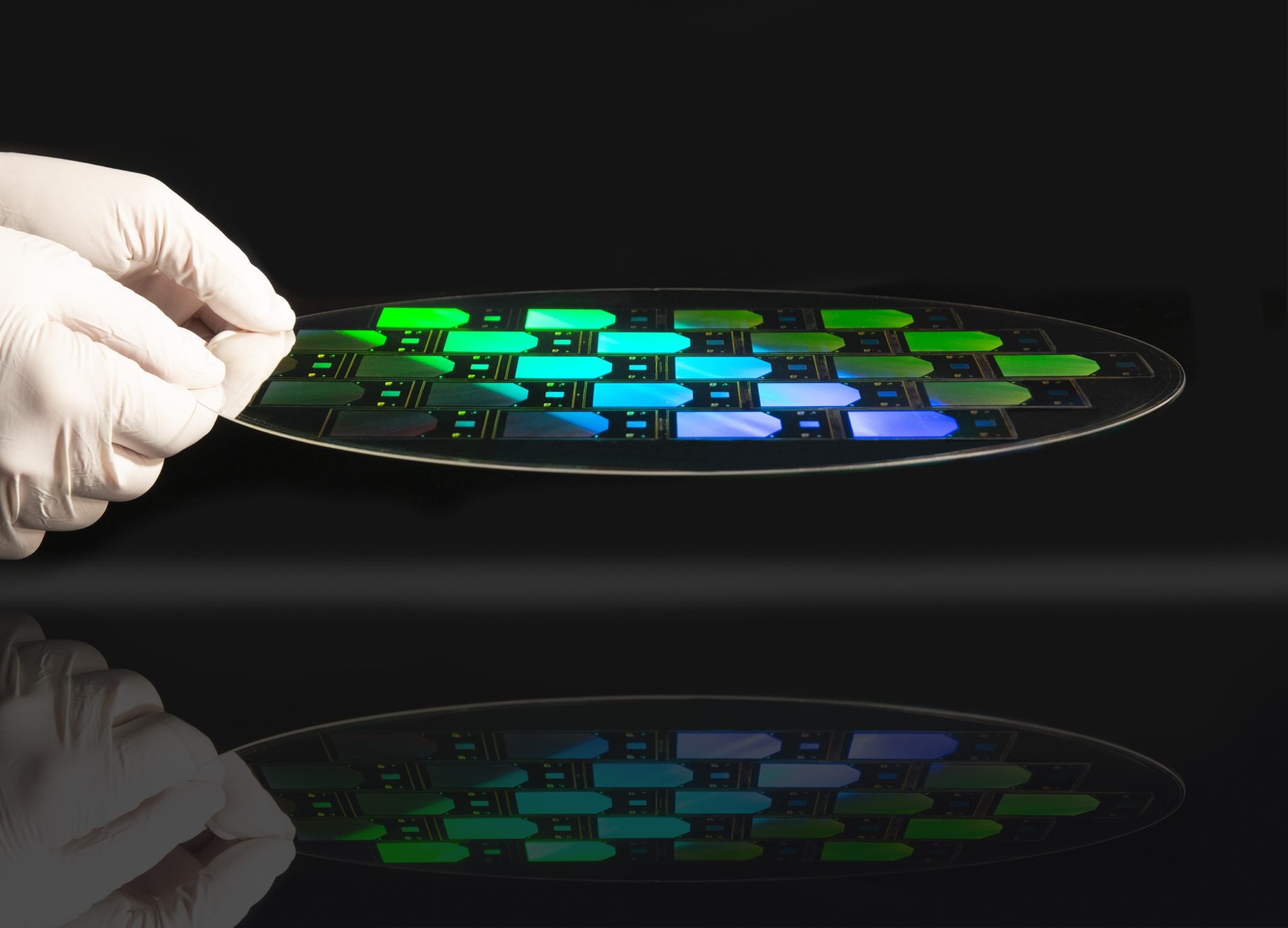
In Augmented Reality and Mixed Reality News
January 29, 2020 – SCHOTT, Inkron, EV Group (EVG), and WaveOptics have today announced that as a result of their collaboration, they have produced a high-refractive-index glass wafer for Augmented Reality (AR) and Mixed Reality (MR) devices. SCHOTT states that the new offering allows for a wide field of view up to 65°, and enables a fully immersive user experience thanks to the 300 mm wafer’s 1.9 refractive index. The companies anticipate that not only will the wafer serve as a substrate for future AR and MR device generations, but it also represents the presentation of a proof of concept.
The new product combines the glass expertise of SCHOTT; the formulation and resin innovation of Inkron; the standard-setting nanoimprint lithography (NIL) capabilities of EVG; and the waveguide architecture of WaveOptics, an optical design house for high-performance waveguides.
SCHOTT RealView glass wafers with a high refractive index are key components of next-gen AR/MR headsets. The glass wafers are the basis for customers’ multi-layered RGB waveguides, and therefore are a key part of the AR/MR display unit that enables an immersive user experience. SCHOTT’s product offering includes refractive indices from 1.5 to 1.9 at wafer diameters of 100, 150, 200, and 300 mm.
Inkron’s high RI resin IOC-133 features high refractive index (1.9) combined with processability and optical properties. These material features combined with the SCHOTT RealView substrate and EVG’s process experience offer a solid foundation for WaveOptics’ waveguide design, according to the companies.
The fabrication of the demonstrator was carried out at EVG’s NIL Photonics Competence Center using its proprietary wafer processing equipment. This included EVG’s recently introduced HERCULES NIL 300 mm fully modular and integrated UV-NIL system with SmartNIL technology, which can replicate structures on substrates up to 300 mm in diameter.
WaveOptics, a designer and manufacturer of diffractive waveguides, offers waveguide technology platforms that feature fields of view between 15° and 60° diagonal, which the company states are readily customisable to meet customer demands.
“The market has been clamoring for a high-index glass with matching high-index resin. Together with our partner Inkron, SCHOTT is again establishing a pioneering role in setting up the infrastructure for most advanced waveguide solutions,” said Dr. Ruediger Sprengard, Head of Augmented Reality at SCHOTT. “With the demonstration of a resin matching the optical properties of the latest SCHOTT RealView generation and meeting the requirements of EVG’s mass-manufacturing NIL process, the missing link in the fabrication system of next-level field of view waveguides is now accessible.”
At Photonics West 2020, the companies will publicly display the industry’s readiness for high volume production of wide field-of-view devices. The companies anticipate that leveraging the high-index combination of glass and resin on a 300 mm wafer diameter and proving compatibility with 300 mm mass production equipment will help pave the way for an efficient and lower-cost manufacturing ecosystem for AR waveguides, potentially marking the next milestone on the road to consumer AR devices.
Dr. Frederik Bachhuber, Innovation Manager for AR at SCHOTT, commented: “This development, together with our partners Inkron and EVG, is a major evolution towards addressing the consumer market. On the one hand, we fill the AR glass wafer innovation pipeline with products that feature outstanding properties; on the other, we team up with strong partners to fill these pieces with ‘optical life’, immediately ready for mass production!”
Image credit: EV Group
About the author
Sam is the Founder and Managing Editor of Auganix. With a background in research and report writing, he has been covering XR industry news for the past seven years.
